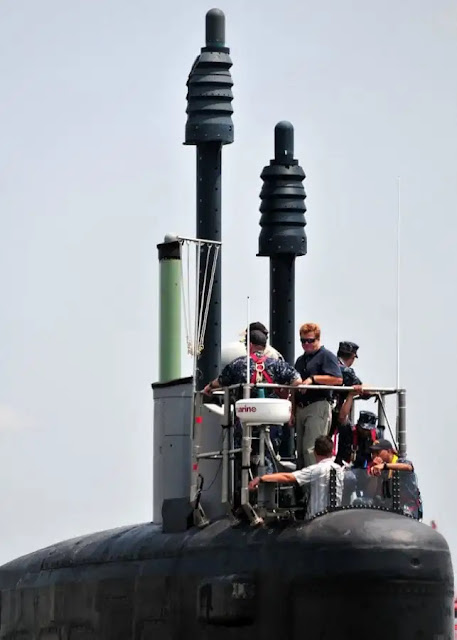 |
| United States Navy's submarine New Jersey (SSN 796) was recently launched into the James River |
These submarines are capable of supporting multiple mission areas and can operate at speeds of more than 25 knots for months at a time.
"25 knots for months at a time"!?! I know nuclear submarines can go very fast, for a submarine, and I know they can stay submerged for months on end, but can they really run at full speed for that long? I mean, they are nuclear powered, so they should be able to produce lots of power continuously, but it just seems like you're asking for trouble to do that. Stress, vibration and heat can all lead to important metal bits cracking, which can lead to all kinds of trouble. So this got me intrigued.
Over at Wikipedia, I find that the submarine gang has been busy cooking up all kinds fancy stuff.
Submarine Secrets: Pump Jets And Propellers Explained
H I Sutton
 |
| Submarine Masts |
Virgina class submarines have see-by-wire periscopes called photonics masts. Basically it's digital camera on a stick. Optical periscopes (which all submarines used in the 20th century) were basically giant hydraulic rams that ran vertically through the center of the control room, from the top of the sail to the keel. The photonic mast does away with most of that. I imagine they still have a hydraulic ram to extend or retract the mast, but it's short one and lives entirely within the sail (the big fin sticking up out the top center of a submarine). They just need one little skinny hole for the wire to go inside the hull. From there you can run it anywhere you want. Google served up the above picture, but the site where it originated only has a video, and that video has been taken down, so all we have is this splash screen.
 |
| The Virginia-class attack submarine Mississippi (SSN 782) Masts U.S. Navy photo by Chief Mass Communication Specialist Ryan G. Wilber |
No comments:
Post a Comment